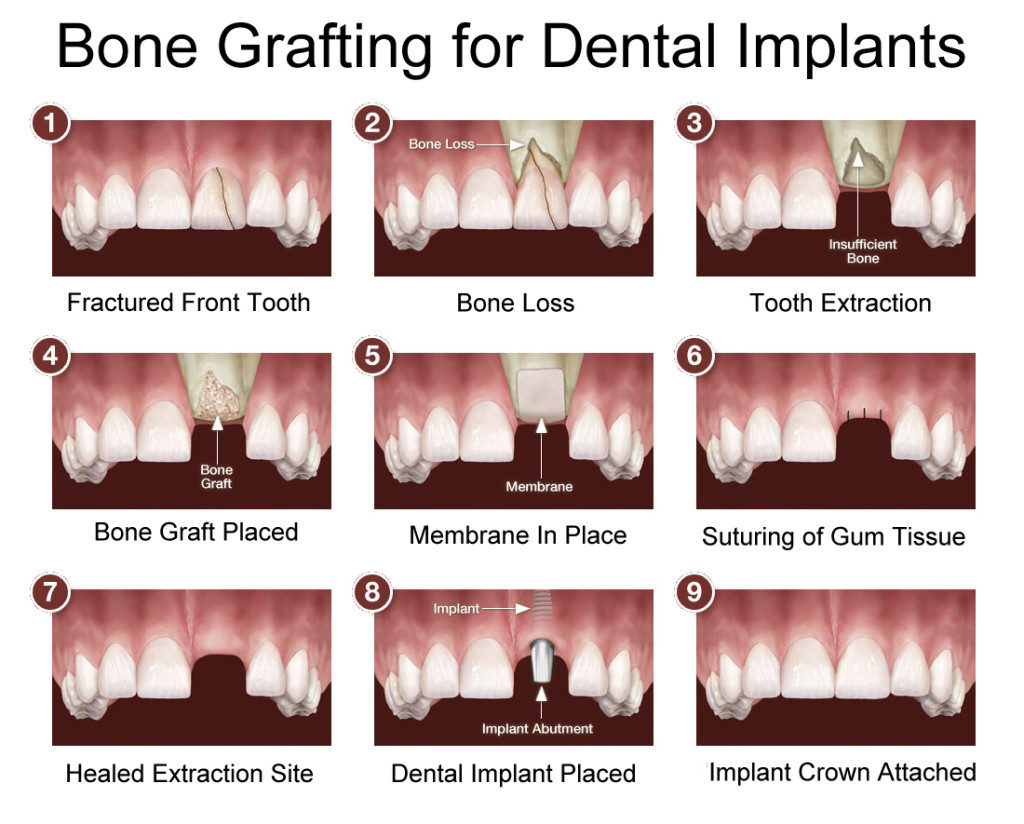Dental Bone Grafting

All about dental bone grafting
The term bone grafting may not sound very friendly; however, you’ll soon find out the importance of replacing dental bones in the case of lost tooth/teeth.
Our jawbone does a great job of holding our teeth in place. When a tooth comes off, our first thought is to get a dental implant. It is important to note that our dentation is encompassed by bone structure. Therefore when a tooth or teeth are missing the bone doesn’t have anything to support. This can cause a defect in height and width of the bone and that’s where bone grafting comes in.

Minor Bone Grafts
If you lost tooth/teeth some time back and aren’t growing back, it’s more likely that the loss of bone in that area is hindering growth. A simple bone solution is able to fix the problem. The dentist will open up the affected zone, placing demineralized bone graft granules in it. Some surgeons will prefer to use the patient’s own bone in the operation for the best outcome.
Ideally, the dentist will extract the bone somewhere near the wisdom tooth. He will grind the bone to tiny granules and then mix it with the demineralized bone. A few months in, the bone graft should heal, merging with the bone tissue to create an even height and width within that area.
Large Bone Graft
Excessive loss of teeth over time may lead to advanced bone misplacement. The lower jaw bone in this case is severely affected. Affected patients lack enough bone to hold dental implants. Bone grafting is imperative to solving this problem. The procedure involves a blend of demineralized, sterile human bone plus the patient’s own bone which is used to create a balance in height and width in order to accommodate dental implants. The patient’s bone is extracted from the jaw, hip, or tibia in the shape of a small block. The patch is protected by a membrane and then left to heal for some time before dental implants are input.
In the case of a patient who is missing upper molar teeth, a different procedure is involved. When many teeth are missing in the upper jaw, a hollow cavity brings about a condition known as maxillary sinus. To place a dental implant is almost impossible in this situation, therefore bone grafting is necessary in order to raise the width and height of the bone in this region. This operation is called a ‘sinus lift’.
The procedure involves making a cut in the gum tissue to reach the sinus cavity. A combination of demineralized, sterile human bone and the sick person’s own bone is deposited into the area between the sinus membrane and the bone of the sinus floor. The surgeon will work on it till a certain thickness is achieved. A vital collagen membrane is put in to protect the new bone. At this time, the width of the bone can be enlarged to create space for new implants. The procedure will take not less than 4 months to heal.
Nothing beats a great smile. Don’t be afraid of bone grafting as it makes new teeth possible, especially now that Springvale Dental Clinic is able and equipped to help out!



